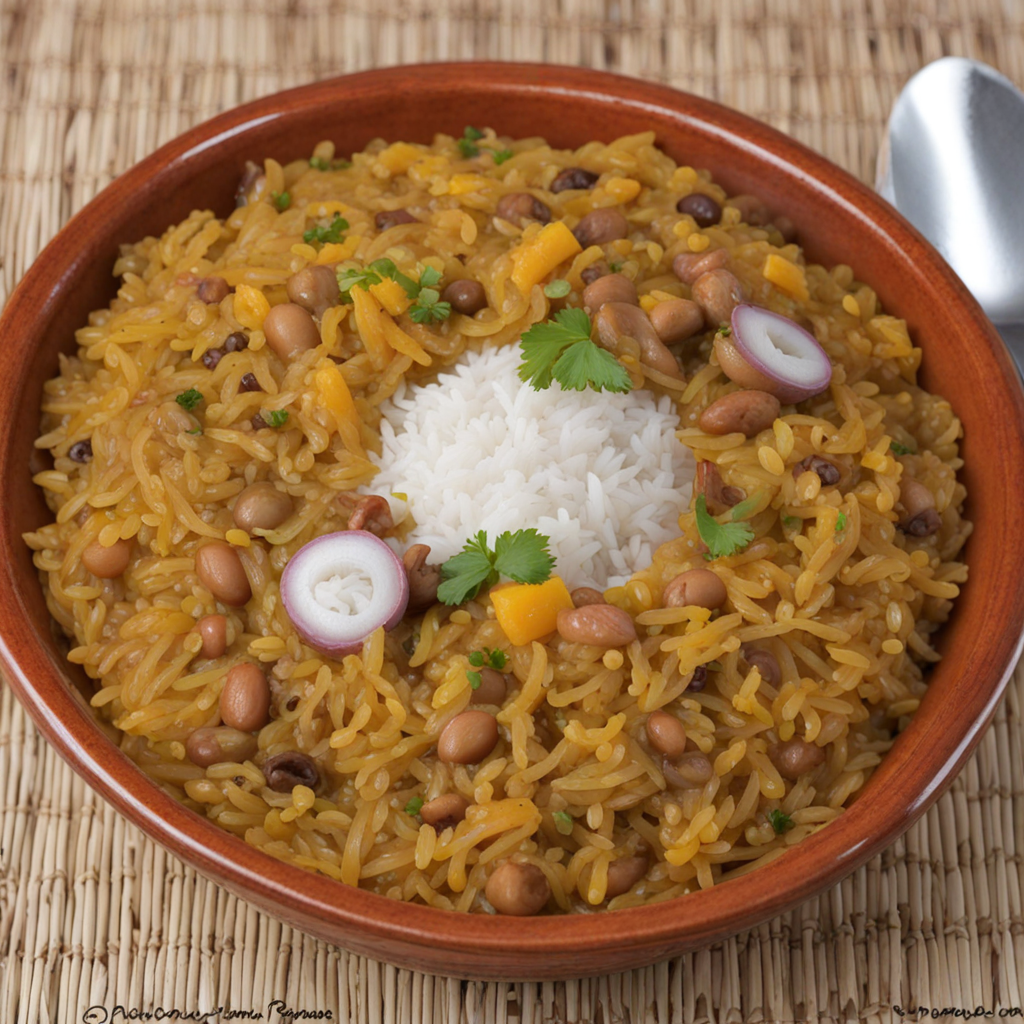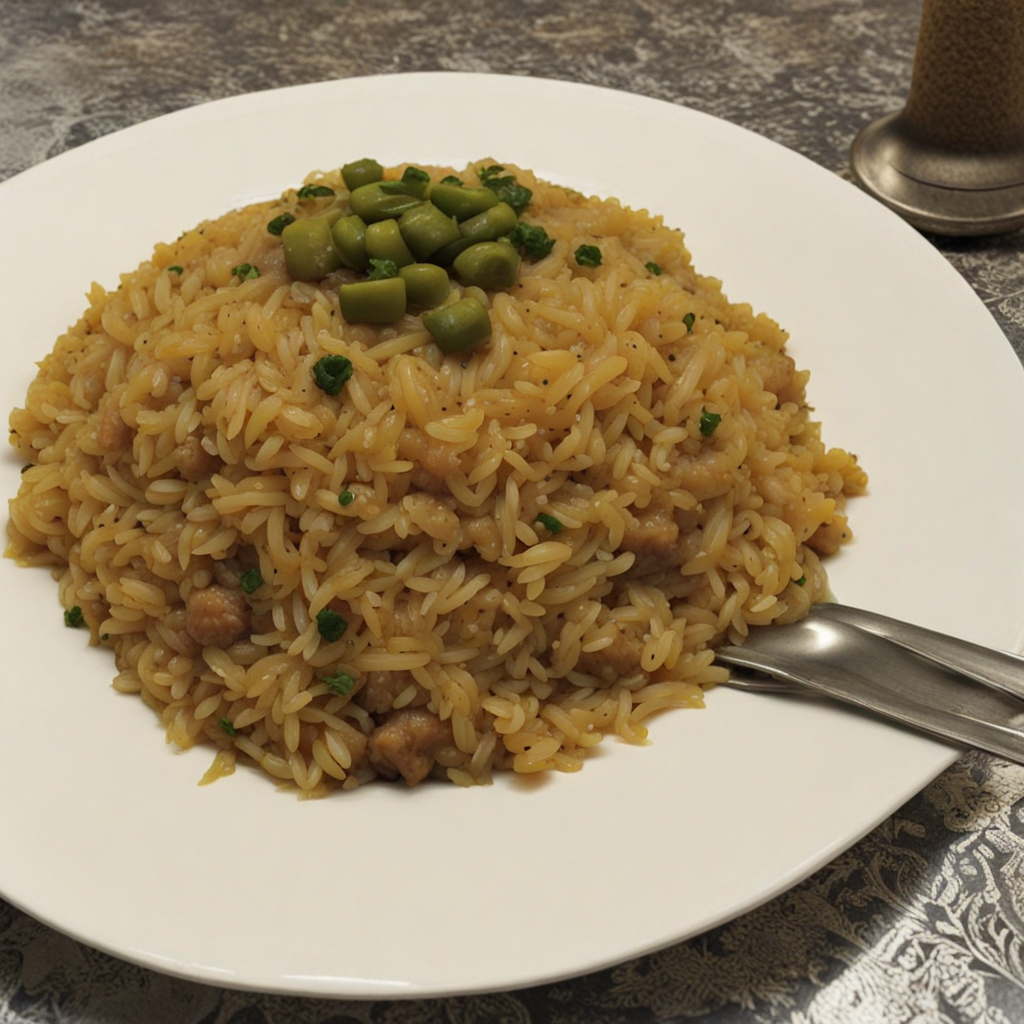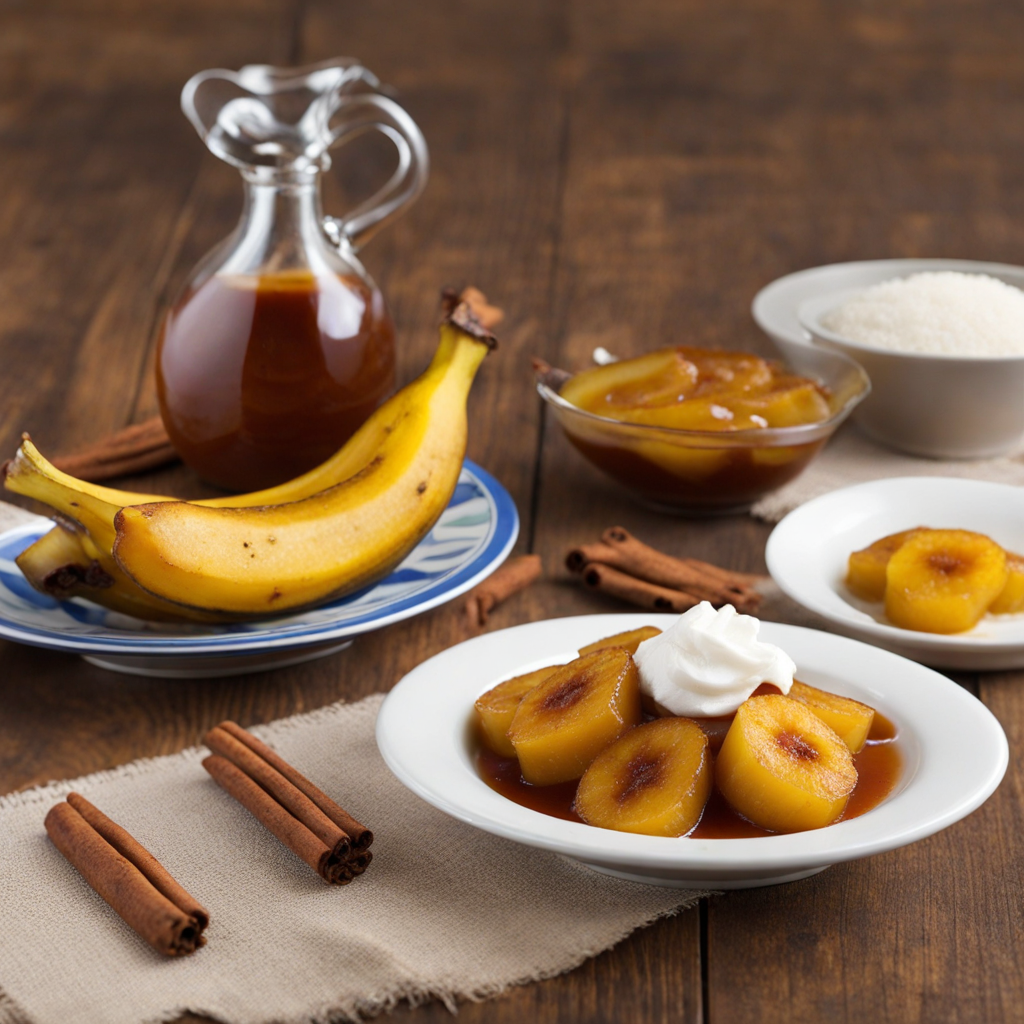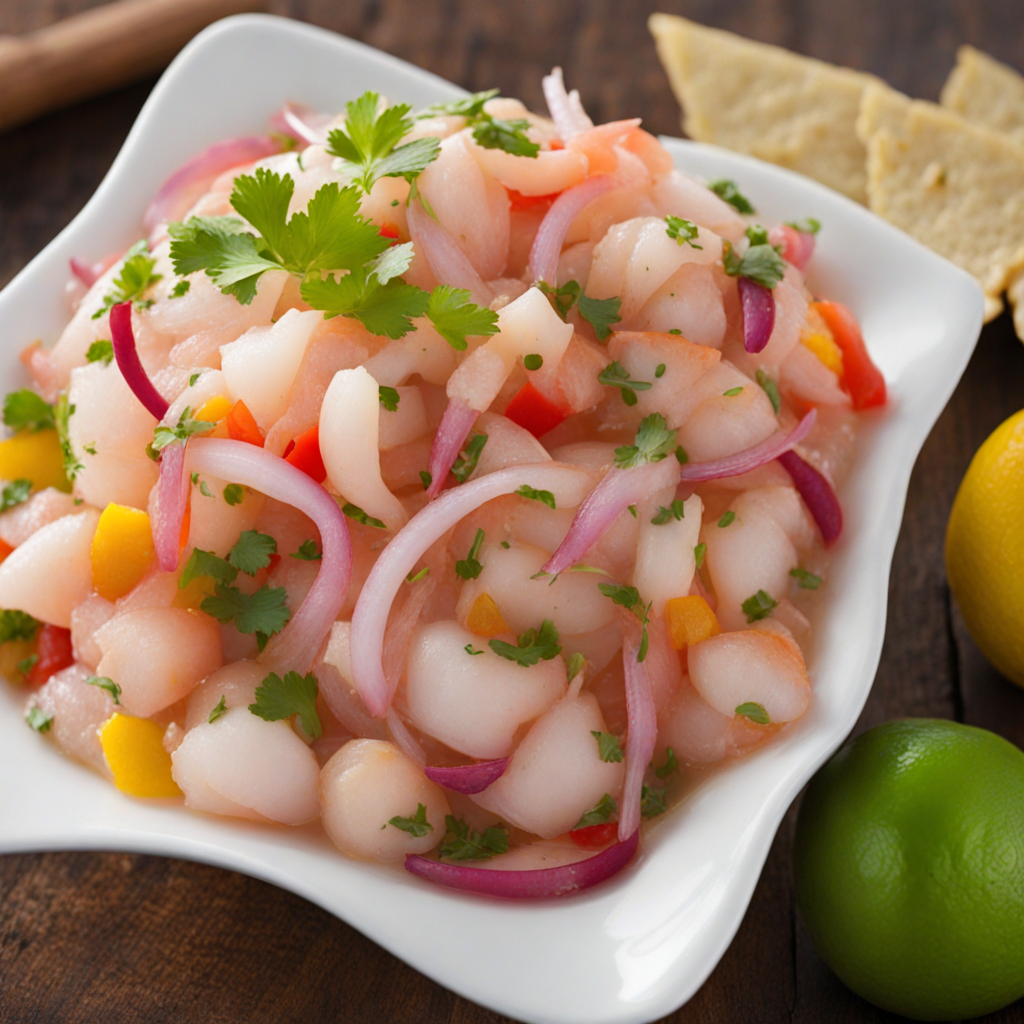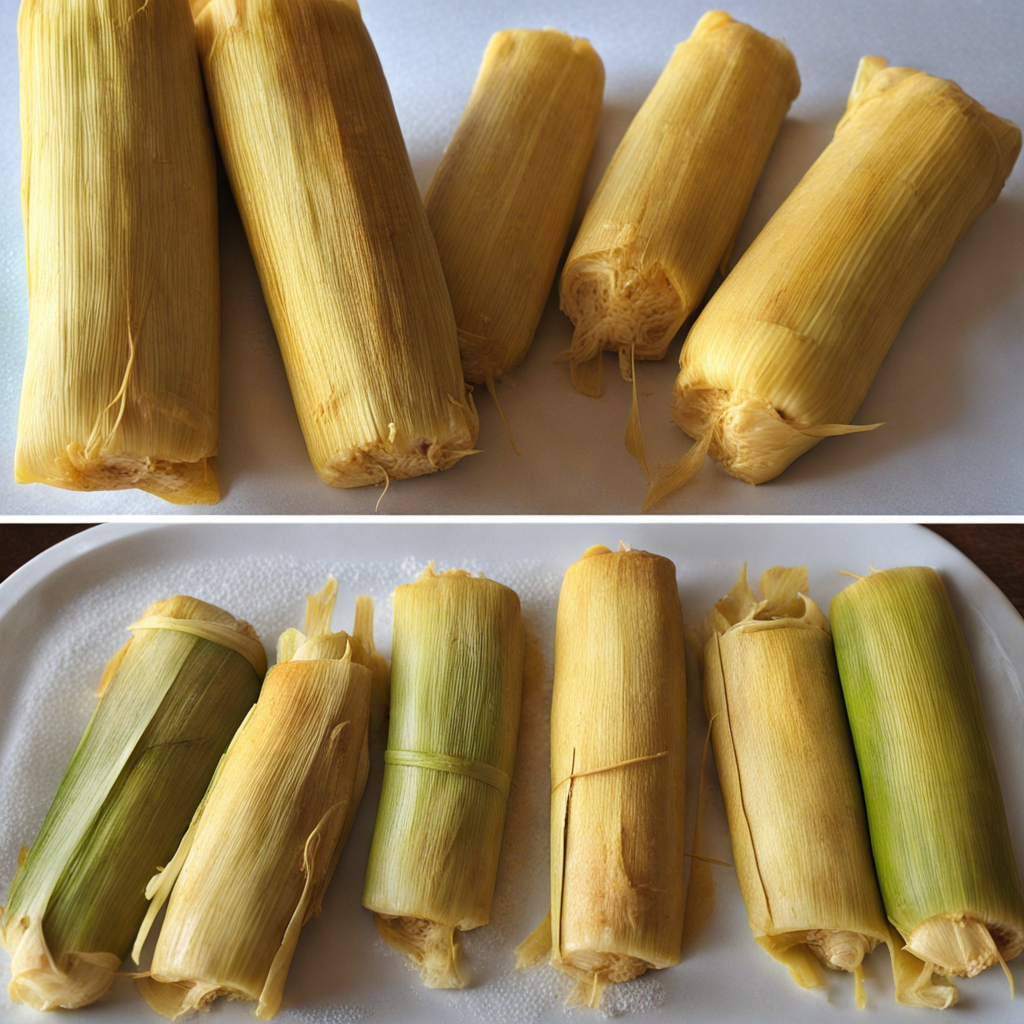Arroz con Guandú
Arroz con Guandú is a delightful Panamanian dish that beautifully marries the flavors of rice and pigeon peas, known locally as 'guandú.' This dish is characterized by its vibrant yellow hue, often achieved through the use of turmeric or saffron, which not only adds visual appeal but also a subtle earthy flavor. The rice is typically cooked to perfection, fluffy and slightly sticky, providing a perfect canvas for the creamy texture of the guandú. The combination of these ingredients creates a comforting and hearty meal that resonates with the rich culinary traditions of Panama. Adding to the charm of Arroz con Guandú are the various seasonings and aromatics that elevate its taste profile. Sofrito, a blend of sautéed onions, bell peppers, garlic, and herbs, is often incorporated into the dish, infusing it with layers of flavor. Some variations may include coconut milk, which contributes a luscious creaminess and a hint of sweetness that balances the savory elements. The dish can be further enriched with the addition of meats such as chicken or pork, making it a versatile option for any meal occasion, whether it's a family gathering or a festive celebration. Served as a side dish or as a main course, Arroz con Guandú is often accompanied by a fresh salad or fried plantains, adding a delightful contrast of textures and flavors. The dish is not only a staple in Panamanian homes but also a reflection of the country’s agricultural heritage, showcasing local ingredients that are both nutritious and satisfying. For anyone looking to explore the tastes of Panama, Arroz con Guandú offers a unique culinary experience that captures the essence of the region's vibrant food culture.
How It Became This Dish
Arroz con Guandú: A Culinary Journey Through Panama Arroz con Guandú, a cherished dish in Panamanian cuisine, represents a delightful blend of cultural influences, historical significance, and culinary evolution. This dish, featuring rice and guandú (also known as pigeon peas), embodies the heart and soul of Panama’s gastronomic identity, reflecting its diverse heritage and the agricultural abundance of the region. #### Origins: A Fusion of Cultures The origins of Arroz con Guandú can be traced back to the Indigenous peoples of Panama, who cultivated various legumes and grains long before the arrival of European settlers. The guandú, a legume native to Africa and brought to the Americas via the transatlantic slave trade, quickly became a staple in the diets of many Central American peoples. The incorporation of guandú into rice dishes represents a fusion of Indigenous practices with African agricultural traditions and Spanish colonial influences. The Spanish colonizers introduced rice to the Americas in the 16th century, and it became a fundamental ingredient in many Latin American cuisines. In Panama, rice soon became a staple food item, often served alongside beans, meats, and vegetables. The melding of rice and guandú created a dish that not only provided sustenance but also reflected the cultural synthesis characteristic of Panama’s history. #### Cultural Significance Arroz con Guandú is more than just a dish; it is a symbol of Panamanian identity. It is commonly associated with festive occasions, family gatherings, and cultural celebrations. The dish is often featured during important events, such as Christmas and national holidays, where it serves as a comforting reminder of home and heritage. The combination of rice and guandú is nutritionally significant as well. This pairing provides a complete protein, making it a vital food source in a country where many people rely on simple, hearty meals. Furthermore, guandú is known for its resilience as a crop, thriving in various climates and soils, which has made it an essential ingredient for rural communities in Panama. In the Afro-Panamanian communities, particularly those along the Caribbean coast, Arroz con Guandú holds special cultural significance. These communities have maintained their traditions and culinary practices, often infusing the dish with unique spices and flavors reflective of their African heritage. The preparation of Arroz con Guandú can vary widely from one household to another, with each family adding their personal touch, whether it be the addition of coconut milk, spices, or meats, making it a canvas for creativity and expression. #### Development Over Time Over the years, the preparation and presentation of Arroz con Guandú have evolved, influenced by globalization, migration, and changing culinary trends. In rural areas, the dish is traditionally prepared in large pots over an open flame, creating a smoky flavor that enhances the overall experience. On the other hand, urban environments have seen a shift towards convenience, with pre-packaged ingredients and simplified cooking methods becoming commonplace. In the 20th century, the rise of Panamanian nationalism and pride in local cuisine led to a revival of traditional dishes like Arroz con Guandú. Chefs and home cooks began to explore the dish’s roots more deeply, experimenting with flavors and ingredients while maintaining its core essence. The inclusion of local ingredients such as coconut, peppers, and various herbs has added depth and variety, allowing Arroz con Guandú to remain relevant in contemporary Panamanian cuisine. Today, the dish is celebrated not only in homes but also in restaurants across Panama and beyond. Internationally, it has gained recognition as part of the broader Latin American culinary movement. Food festivals, cultural events, and cookbooks have helped to popularize Arroz con Guandú, showcasing its versatility and rich flavor profile. #### Modern Interpretations In modern Panamanian kitchens, Arroz con Guandú is often cooked with a variety of proteins, including chicken, pork, or seafood, which adds a twist to the classic recipe. Some chefs have embraced fusion cuisine, incorporating elements from other culinary traditions, such as Asian or Mediterranean influences. This adaptability speaks to the dish's enduring appeal and its ability to resonate with new generations of diners. Street food vendors and local eateries often serve Arroz con Guandú as a quick, affordable meal, emphasizing its accessibility and importance as comfort food. The dish continues to be a go-to for busy families, students, and anyone seeking a satisfying and nourishing meal. #### Conclusion: A Culinary Heritage Arroz con Guandú exemplifies the rich tapestry of Panama’s culinary heritage, weaving together threads of Indigenous, African, and Spanish influences into a dish that is both simple and profound. It is a testament to the resilience and adaptability of Panamanian culture, representing the stories and traditions of a nation that has navigated the complexities of history while celebrating its roots. As Panama continues to evolve and grow in the global culinary landscape, Arroz con Guandú remains a beloved staple, reminding people of the importance of food as a cultural connector. Whether enjoyed in a festive gathering, a family dinner, or a street-side stall, this dish is a delicious embodiment of Panama’s history, diversity, and enduring spirit. In every spoonful, one can taste not only the flavors of the ingredients but also the rich stories of the people who have cultivated and cherished this dish for generations.
You may like
Discover local flavors from Panama


